ZZ Plant Winter Care: A Complete Guide
ZZ plants (Zamioculcas Zamiifolia) are native to tropical regions and dry grasslands of Eastern Africa. ZZ plants are hardy and beautiful plants that have glossy leaves and require low maintenance.
Winter is the dormant period for the ZZ plant, which means the plant is inactive or rests during the winter months. Caring for this plant will be very different during the winter months compared to the other time of the year.
During winters, ZZ plants need to be kept away from cold drafts at a brightly lit spot where it receives plenty of indirect sunlight. Provide them with adequate water and stop fertilizing the ZZ plant as they are at rest. Maintaining stable humidity and temperature is also critical for the plant to remain healthy.
If you want a healthy ZZ plant that doesn’t face any problems during the winter months, you need to have a different care routine.
Caring for your ZZ plant requires minimal effort, and in this article, we will discuss winter care for the ZZ plants in more detail.
Also read: Why is my ZZ plant dying? How to revive?

Please note: Simplify Plants is reader-supported. Some links in the post are affiliate links and I get a commission from purchases made through links in the post.
Common problems of ZZ plant in winter
ZZ plants become dormant in winter, and their growth slows down more than average.
Those who are new to ZZ plants often find it challenging to understand the reasons behind the problems that are seen during winter.
There are many problems that your ZZ plant might face during the winter months. Some of these are:
- Overwatering
- Overfertilization
- Slow growth
- Leaf dropping due to cold drafts
- Leggy growth
ZZ plants require less water than most other plants, and in winter, the water requirements go down even more. The plant owners often make a mistake and give the ZZ plant the same amount of water in the winter.
That gives rise to all the problems related to overwatering, such as root rot, brown leaves, etc.
Like the water requirements, the requirement for nutrition and fertilizers also decreases in winter as the ZZ plant becomes inactive.
Overfertilization makes the roots dry.
Don’t be frustrated by the slow growth in ZZ plants during winter. ZZ plants are very slow-growing plants. In winter, the growth slows down even more, and you might not see any growth at all.
That is because winter is the dormant period for many plants, including the ZZ plant.
If your ZZ plant is exposed to cold drafts during the winter, the leaves will be affected and start drooping. You should keep the ZZ plant away from cold drafts.
Leggy growth is an issue that you might find in your ZZ plant during the winter. The plant might fail to get enough light during this time of the year, leading to leggy growth.
How to take care of ZZ plants in winter?
If you can provide the ideal conditions to your ZZ plant even in winter, it will remain healthy and not show any problem.
Light
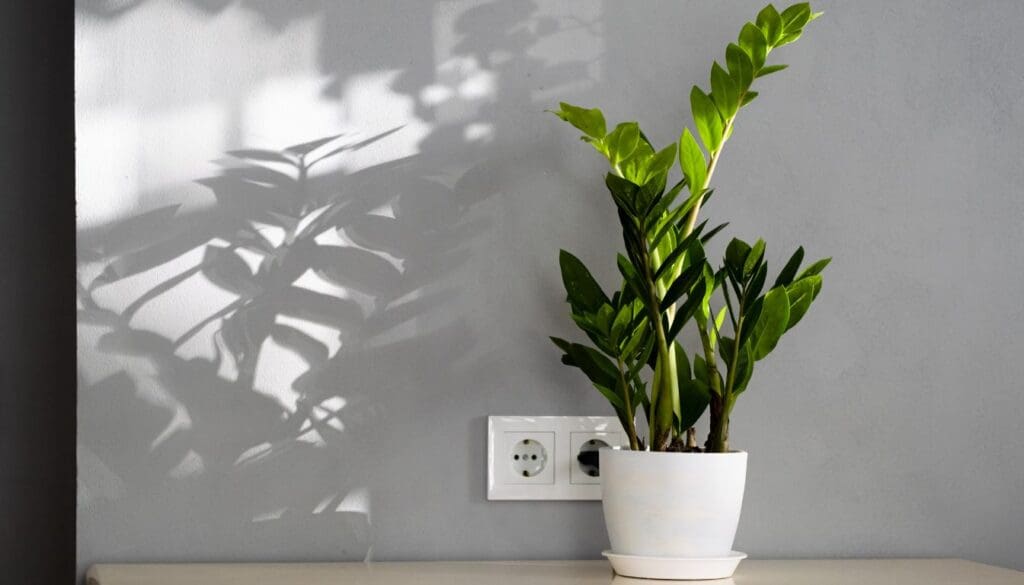
During the winter months, light intensity and duration go down significantly, and as a result, the plants suffer due to low light.
Though the ZZ plant can survive in low light, it needs enough light to be healthy and grow.
If you think that your ZZ plant is not getting enough light, you can follow these steps:
- Keep your ZZ plant near an artificial light.
- Fluorescent bulbs that are in your home are a great source of artificial light and can provide enough light to the plant.
- Try to keep the bulb 4-12 inches away from the ZZ plant. These bulbs are cheap and sustainable as compared to the other bulbs.
- Keep the ZZ plant near a window.
- If you have a window in your home that gets enough light, you should consider moving your ZZ plant near that window.
- Just make sure that the plant is not exposed to direct sunlight.
- Wash off the dust.
- If your ZZ plant has dust on it, you should clean the dust so that the plant can use the light, and the dust will not be a hindrance.
- Clean your window.
- Cleaning windows will allow your ZZ plant to absorb more light.
Watering
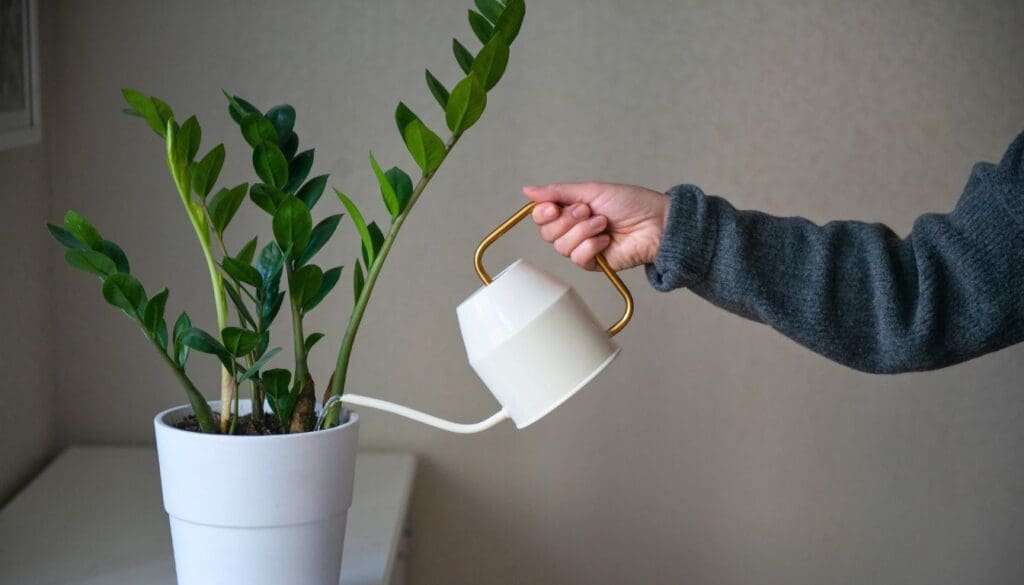
Overwatering is the most common mistake that plant owners make during winter. Winter is the dormant period for the ZZ plant so it requires less water than the other times of the year.
The only way to avoid overwatering is to water the ZZ plant only when the soil is completely dry.
If you want to know if the soil is completely dry, check for these points:
- Don’t judge based on the surface of the soil.
- Sometimes you will notice that the soil is dry, but that might not be the case. The soil on the surface dries due to the exposure, but on the inside, it retains moisture.
- If you want to check if the soil is completely dry, put your finger into the soil up to 2 inches. If the soil is dry, you can water the ZZ plant. You can also use a moisture meter for this. It is a lifesaver for a hobbyist.
- Another way to check the soil is by lifting the pot. When the soil is dry, it will be lighter. You can compare the weight by lifting the pot right after watering and lifting it when you think it is dry.
- Water as per the humidity. If you have a humidifier, or if your house is humid during winter, your ZZ plant will not require much water. But if the air lacks humidity and is dry, the ZZ plant will need more water.
The key is to check the soil before watering.
Also read: How long can your indoor plants live without water?
Temperature
ZZ plants thrive in temperatures between 65°F-75°F. ZZ plants start facing problems when the temperatures drop below 40°F.
It is crucial to keep the temperatures ideal for the ZZ plant to thrive. You can follow these:
- Keep the ZZ plant away from the window at dusk.
- If your area is freezing and the windows frost overnight, you should place the ZZ plant far from the window.
- Frosting can damage the plant, so you can even put insulating material between the plant and the glass.
- Keep the ZZ plant away from any heat source. Examples would include a fireplace, furnace, etc.
- Try to maintain a temperature between 65°F-75°F if possible.
Humidity

Lack of humidity is a big problem in the winter. ZZ plants tend to develop a lot of problems due to lack of humidity.
Signs of low humidity on the ZZ plants can be brown tips on the leaves and droopy leaves.
There are few ways with which you can deal with low humidity:
- Humidifier: Humidifiers are devices that add humidity to the air inside your house. These devices are gaining popularity due to their function.
- If you have a good humidifier in your house, it will add the missing humidity back to the air, which will help your ZZ plant.
- Misting: Spraying water on the leaves of your ZZ plant a few times a week will add moisture to it and not make it completely dry.
- Keep the ZZ plant in your bathroom: If your bathroom has enough light, then you can consider keeping your ZZ plant inside your bathroom.
- It might be an excellent place for the plant as the water coming out of the showers will provide the required humidity to the ZZ plant.
- Prepare a pebble tray: If your ZZ plant is not getting enough humidity, you can prepare a pebble tray by taking a tray and placing pebbles on it.
- You can then add water to the tray and place the ZZ plant on it. You should place the ZZ plant so that the drainage holes of the pot are inside the water on the tray.
Fertilizer

ZZ plants do not need fertilizers in the winter as it is the dormant time for the plant.
Overfertilizing is a common mistake that ZZ plant owners make. Most new plant owners add fertilizers to their ZZ plant even during the winters.
Fertilizing the ZZ plant in the winter will burn their roots out and make them dry.
It is okay to feed fertilizers to the ZZ plant during the other months when the plant is growing, and they need those additional nutrients. However, you must avoid fertilizing during the winter months.
Repotting
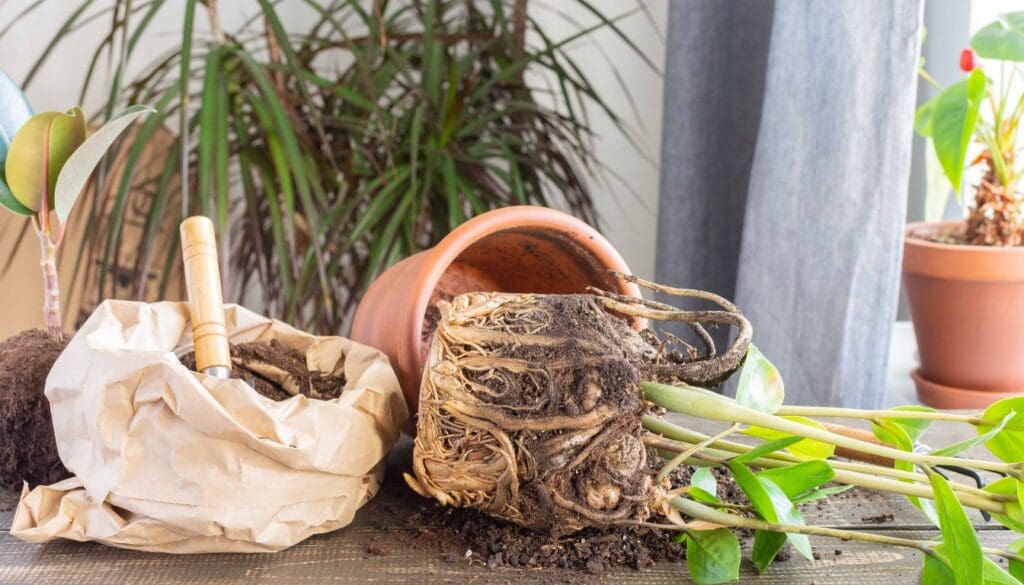
ZZ plants are root-bound plants that love to stay rooted in the same place or pot. However, you must repot the plant when it outgrows the current pot or just to keep it healthy.
Winter is not the ideal time to repot your ZZ plant. You should repot your ZZ plant during spring and summer.
Repotting during winter will add dryness to the plant, and it is best to repot the ZZ plant when it is growing and not in a dormant state.
Repotting during the winter months will cause stress and shock to the ZZ plant, and it might not be able to recover from it if not taken care of.
Pruning
It is essential to prune your ZZ plant during winter as you may notice a lot of leggy growth during the winter.
Use a sharp and sterilized pair of scissors to prune your ZZ plant, make clean cuts, and remove the leggy parts.
Don’t forget to thoroughly wash your hands after pruning the ZZ plant or putting on gloves while pruning the ZZ plants.
Tips for the healthy growth of ZZ plants during winter

- Try to maintain a temperature between 65°F-75°F inside your house.
- Don’t apply fertilizer to the ZZ plant during winter as it is the dormant period for it.
- Keep the ZZ plant near a window to get indirect light or place it near an artificial light.
- Use a humidifier to provide the ZZ plant the humidity it needs.
- Don’t repot the ZZ plant during winter.
Sources: ZZ plant study, College of agricultural studies, University of Vermont, National science foundation.
Recommended Garden Supplies
| Product Image | Our Recommended Gardening Supplies | Check Offers! |
|---|---|---|
Top Top
Top
Top
Top
Top
Top
Top
Top | rePotme Houseplant and Tropical Classic Potting Soil Mix | Check Offer On Amazon |
 Top
Top
Top
Top
Top
Top
Top
Top | Espoma Organic Indoor Plant Food | Check Offer On Amazon |
 Top
Top
Top
Top
Top
Top
Top
Top | GooingTop LED Grow Light 6000K Full Spectrum Clip Plant Growing Lamp | Check Offer On Amazon |
 Top
Top
Top
Top
Top
Top
Top
Top | Soil Moisture Meter | Check Offer On Amazon |
 Top
Top
Top
Top
Top
Top
Top
Top | Govee Hygrometer Thermometer, Bluetooth Enabled! | Check Offer On Amazon |
 Top
Top | LEVOIT Humidifiers for Large Room(Best For Plants) | Check Offer On Amazon |
 Top
Top
Top
Top
Top
Top
Top
Top | Upgraded DIY Automatic Drip Irrigation Kit, 15 Potted Houseplants Support | Check Offer On Amazon |
 Top
Top
Top
Top
Top
Top
Top
Top | Stainless Steel Heavy Duty Gardening Tool Set | Check Offer On Amazon |
 Top
Top
Top
Top
Top
Top
Top
Top | Bonide Insecticidal Soap | Check Offer On Amazon |
 Top
Top
Top
Top
Top
Top
Top
Top | Bonide 32 oz Spray Neem Oil for Organic Gardening | Check Offer On Amazon |
 Top
Top
Top
Top
Top
Top
Top
Top | Garden Safe Fungicide | Check Offer On Amazon |

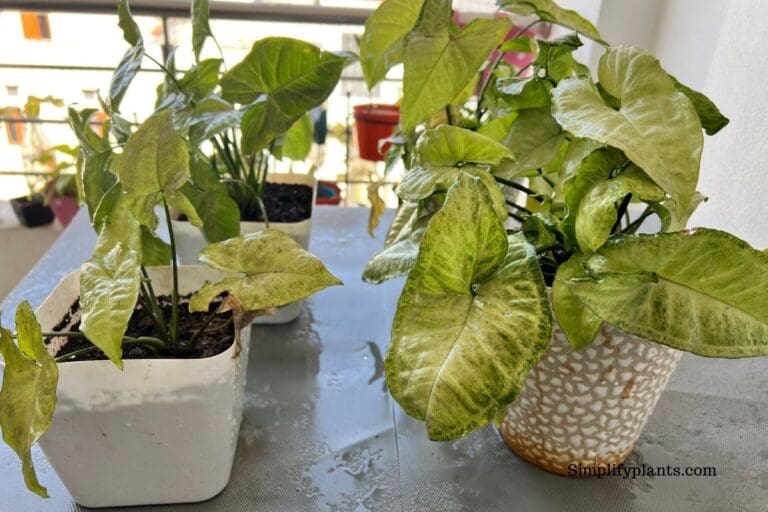
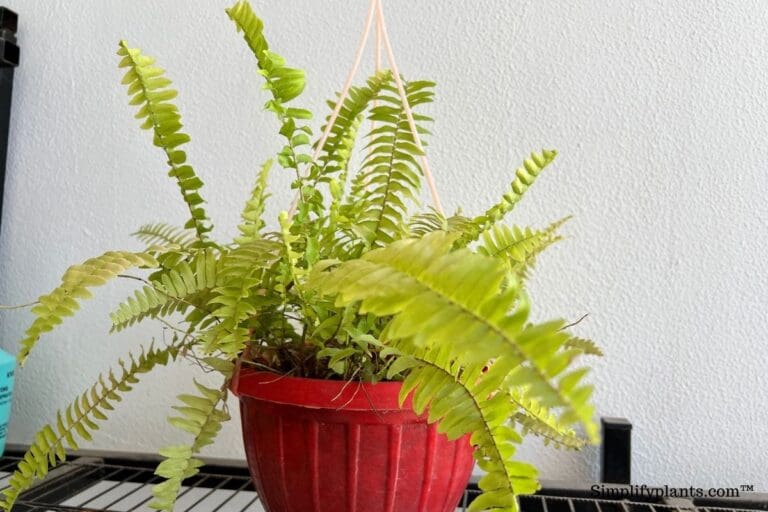



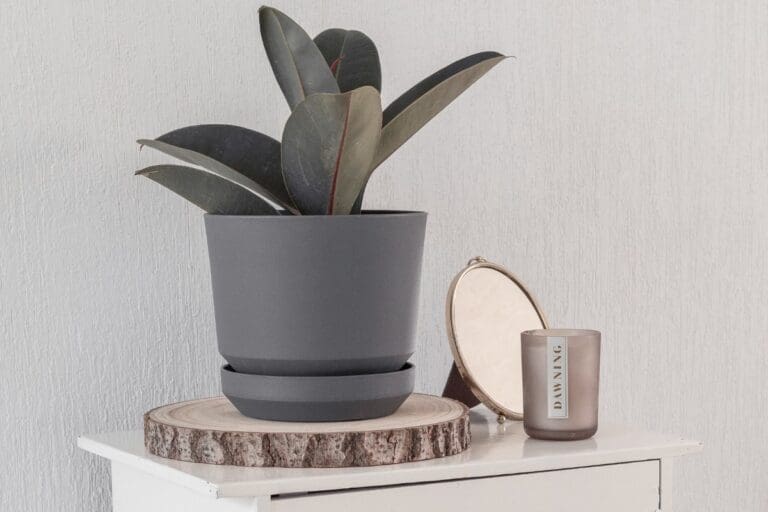
I am really amazed with your writing skills. You have written a great article on ZZ Plant care tips during winter. I have a ZZ Plant and it’s winter in India, where temperature goes down below 15 degree at night. So my ZZ Plant leaves started getting brown at corners, and droopy. I searched on YouTube, and Google but didn’t found any suitable reason for this. Thankfully I landed into your website. Now I came to know it’s due to winter temperature, and low humidity in air. After getting misguided by watching lots of videos, mistakenly I repotted it and added some fertiliser on it, it’s was a dumb mistake. Now I am talking care of it by following your instructions. Thank you very much.